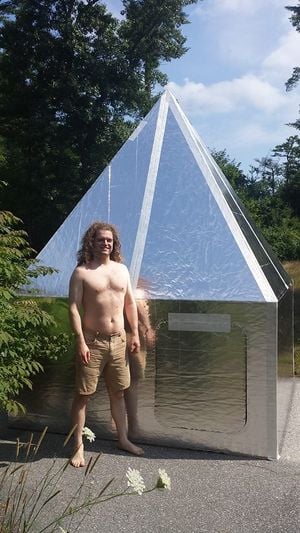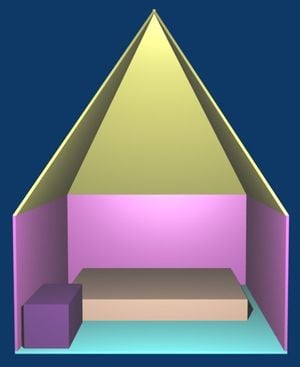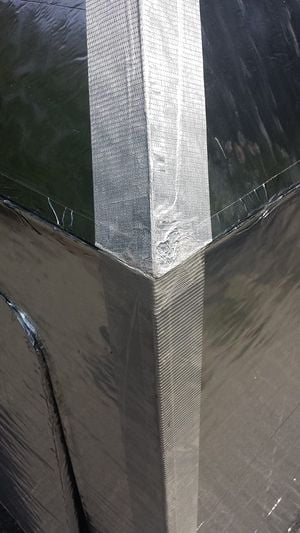Hexayurt project/Hexayurt H8


Available in other languages: /fi /ru
An H8 (square) yurt is composed of 8 8'x4' panels. Four of them are cut diagonally, then taped together to form the roof. The remaining four are the sides. These are the same parts, assembled basically the same, as an H12 hexayurt, just with four sides instead of six.
Total height is 10.93 feet. Footprint is about 64 square feet.
Advantages[edit | edit source]
- Takes up less space than an H12.
- Two 8'x4' plywood sheets, often used for packing, perfectly fit as a floor (inside walls without beveling, under walls with beveling).
Disadvantages[edit | edit source]
- Higher height to width ratio means more vulnerability to high winds. May be reduced by shortening the roof, if wasting some material does not offend you.
- Less internal space.
Bevelling[edit | edit source]

Like all yurts, beveling is not required, but makes the joints cleaner, which probably has some advantages to insulation and structural integrity. It also makes tape hinges simpler - no gaps are needed, just tape on the inside or outside of each joint. Without beveling, this yurt requires 4 cuts. With beveling, it requires 32 cuts, which is substantially more work.
Angles are as follows, as set on a jigsaw (so a normal straight cut is 0°):
Roof corners: 38°
Wall corners: 45°
Roof bottoms and wall tops: 15°
Roof centers and wall bottoms: 0° (these are the un-beveled edges)